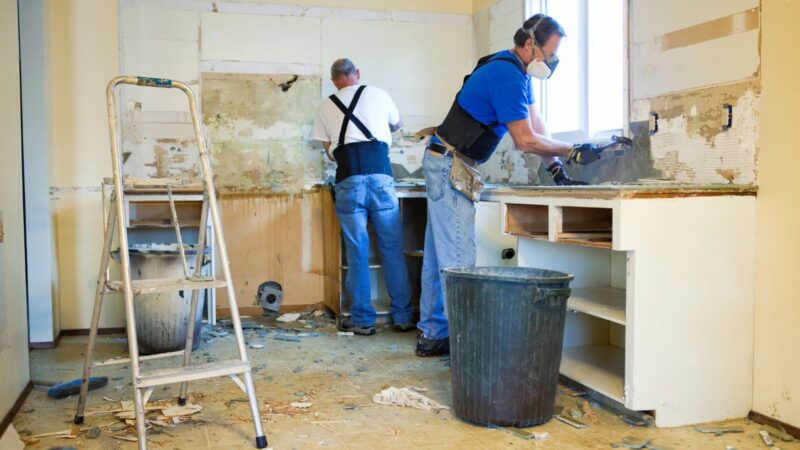
Is your AC unit acting up during the peak of summer? Before calling in a professional, there are a few simple steps you can take to diagnose and possibly fix the issues yourself. This can save both time and money.
Many common AC problems have straightforward solutions. For instance, if your unit is not cooling, the issue might be as simple as a clogged filter or blocked vents. Checking these elements first can often resolve the issue without further hassle.
Strange noises or unusual performance can often indicate minor issues that are easy to address. Cleaning the coils or ensuring the thermostat is set correctly can frequently restore normal operation. By tackling these basic checks, you might avoid a costly repair.
Identifying Common AC Problems
Common AC problems often have tell-tale signs that can help you pinpoint the issue. It is crucial to understand basic AC functions, recognize malfunction symptoms, and inspect the thermostat.
Understanding Basic AC Functions
An air conditioning system has several key components: the compressor, condenser, evaporator, and expansion valve.
The compressorpressurizes refrigerant gas, while the condensercools it, transforming it into a high-pressure liquid. This liquid then flows through the expansion valve, converting it to a low-pressure gas and cooling the indoor air via the evaporator.
Regular maintenance ensures these components work seamlessly together. Familiarity with these basics helps in diagnosing potential issues before they become serious. Katy AC repair solutions often recommend bi-annual inspections to keep these parts in top condition.
Recognizing Signs of AC Malfunction
Several signs indicate your AC might not be functioning properly.
For instance, insufficient cooling can suggest issues with the compressor or refrigerant levels. Unusual noiseslike clanking or buzzing could signify loose or damaged parts. Uneven cooling across different rooms often hints at ductwork or fan problems.
Check for leaks or ice buildup around the unit, which might indicate a refrigerant issue or blocked airflow. High energy bills can signal that the unit is working harder than necessary.
Addressing these signs early can save time and money.
Inspecting the Thermostat
The thermostat regulates the temperature and often controls system efficiency.
First, ensure it’s set to the correct mode and temperature. Issues can arise if it’s near heat sources like lamps or direct sunlight, causing erroneous readings.
Low battery power can also affect its performance, as can outdated software in smart thermostats. For wall-mounted units, check connections and ensure they are securely in place.
If problems persist, consult with a company that offers Katy AC repair solutions for expert advice on whether a thermostat repair or replacement is necessary.
Proper attention to the thermostat often resolves many perceived AC problems, making it a crucial starting point.
Guidelines for Troubleshooting and Repair
This section provides a structured approach to diagnosing AC problems, deciding when to call for professional help, and addressing simple fixes on your own.
Steps for Basic Troubleshooting
Start by checking the thermostat. Ensure it is set to “cool” and that the temperature is below the current room temperature. Next, inspect the air filter. A clogged filter can restrict airflow and cause the system to malfunction. Replace the filter if it is dirty.
Verify the power supply. Check if the circuit breaker has tripped or if there is a blown fuse. If this is the issue, reset the breaker or replace the fuse. Additionally, inspect the outdoor unit. Clear any leaves, dirt, or debris that may obstruct the condenser coils.
Ensure the registers and ducts are open and not blocked. Poor airflow can result from closed vents or ducts needing cleaning. If these steps do not resolve the issue, it’s best to move on to more advanced troubleshooting or seek professional assistance from experts in Katy AC repair solutions.
When to Call a Professional
Some AC issues require professional intervention. Call a technician if the system is making unusual noises, emitting strange odors, or leaking fluids. These symptoms can indicate serious problems like motor issues, mildew, or refrigerant leaks.
If troubleshooting steps fail to identify the problem, or if the unit frequently cycles on and off, it may require a professional diagnosis. Technicians that handle Katy AC repair solutions have the tools and expertise to handle complex issues, ensuring safety and accuracy.
Finally, if the unit is older (typically over 10 years) and inefficient, consider consulting a professional about replacement options. Newer models may offer enhanced efficiency and cost savings in the long run.
DIY Fixes for Simple Issues
For minor problems, some fixes can be done without expert help. Reinserting the thermostat batteries can sometimes resolve connectivity issues. Cleaning or unclogging the drain line can fix drainage problems. A mixture of vinegar and water can be poured down the drain to clear blockages.
Replacing a dirty air filter is another simple DIY task. Buy a compatible filter and follow the manufacturer’s instructions for replacement. If the outdoor unit is dirty, use a garden hose to gently wash the condenser coils, avoiding bending the fins.
Additionally, check the insulation on refrigerant lines. If damaged, it can be replaced to improve efficiency. Always ensure the power is turned off before attempting any fixes. If unsure, consult an expert in Katy AC repair solutions to prevent potential damage or injury.













